Reviews
El Serpiente del Mar / Hydra
Amando de Ossorio
Spain, 1984
Credits
Review by Thomas Scalzo
Posted on 07 October 2013
Source Lightning Video VHS
Categories 31 Days of Horror X
Since the dawn of history, humans have been fascinated, and terrified, by the oceans. Early cartographers, fueled by tall tales, and a paucity of facts, populated many of the blank spaces on their maps with humongous and hideous sea creatures. For centuries, such seemingly benign decorations proved exceedingly powerful on our collective imagination, engendering a persistent belief that something horrible lay in wait in the bottomless depths. Even today, despite extraordinary advances in mapping and exploring the ocean floor, we still cannot claim to have uncovered all of the oceans secrets, or experienced all its horrific possibilities. Each Monday this month, we’ll dive into a tale of terror that plunges us far below the horrors of the surface world into the unfathomable fears of the deep.
We need to find somebody… maybe an important man.
Captain Pedro Fontán
Captain Pedro is in trouble: his latest charter sank off the coast of Spain, and claimed the lives of several crewmembers in the process. Found guilty of negligence by a naval tribunal, Pedro is stripped of his captain’s license, and warned that a civil suit may well be pending. The fact that Pedro’s previous commission ended the same way is certainly a strike against him, as is his well-publicized affinity for booze. And then there’s the matter of his explanation: a sea monster destroyed his ship. Not surprisingly, no one believes him, and the only other witness to the creature’s existence is a woman named Margaret who is cloistered in a mental institution. Knowing that his career, and possibly his freedom, depends on finding someone, anyone, to corroborate his story, Pedro sets out to spring Margaret, track down the beast, clear his name, and warn the world about the menace lurking deep within the waters of the Atlantic.
Before Pedro’s problems take center stage, however, we witness the series of unfortunate events high above the seas that sets the story in motion. When a technical glitch compels a U.S. bomber to jettison its atomic payload, the decision is made to activate the ordnance first, lest the Russians attempt to salvage the weapon and steal its technology. As the explosion was confined to the deepest depths of the ocean, the pilots and their superiors are convinced that the matter is closed. Unbeknownst to them, however, the detonation shook a prehistoric sea serpent out of a centuries-long slumber, and he is none too pleased to be awake. Inevitably, the beast sets out to sate its rage, lashing out at anything and everything that crosses its path, including Pedro’s ill-fated vessel.1
A treasure-trove of mid-eighties horror magic, The Sea Serpent offers up an wonderfully diverse array of entertainment: a ridiculous animatronic creature hell bent on destroying the world, a cast of eccentric characters, awkward dialogue wonderfully enhanced by clumsy overdubs, and a past-his-prime film star in a supporting role, in this case Ray Milland as a cantankerous marine biologist with a penchant for petty theft. We have boats and helicopters exploding for no reason, awkward make out sessions backed by a syrupy soundtrack, and a professional revenge seeker determined to undermine our hero’s quest for redemption. Glaringly obvious sets and models are pressed into service in lieu of actual trains, bridges, ships, and planes, and illogical narrative leaps are made without a second thought. In other words, this is gloriously inept filmmaking from an age before computer animation or intentional camp, a time when even the most ludicrous of horror films was crafted with a seriousness and hands-on authenticity that is wonderful to behold.
An appreciation of the joy to be had by sitting down with The Sea Serpent can best be captured in a brief description of the monster itself, and a summary of one of its most memorable attacks. A bug-eyed rubber worm with tiny fangs and miniature wings, the serpent is substantially enlivened by a shrill scream, not unlike Godzilla’s piercing shriek, and a theme music so similar to the iconic notes from Jaws that its nearly impossible to tell them apart. Despite its blatant borrowings from greater films, though, what makes this beast unique, and hugely entertaining, is its seething anger. The serpent is downright livid at having been woken up from what we can only assume was an extensive and restful hibernation. As Ray Milland puts it, “he’s very irritated, and he attacks anything that approaches him.” This irritation manifests itself in a relentless onslaught upon sailors, vessels, lighthouses, and in my favorite moment of monster carnage, a wharf filled with ships.
The scene begins with Linares, the professional revenge seeker, having a chat with Porto, the besotted dockhand. Out of the corner of his eye, Porto notices what he assumes is a boat approaching. He calls out, but the vessel doesn’t change speed. Porto calls again, this time with more urgency. By the time he realizes that the sea serpent is upon them, it’s too late for Porto. Within moments, the docks are in flames, Porto is dead, and the sea serpent has retreated to the open seas. And yet, though the action is complete, the scene lingers on. Shots of Linares looking on in horror are juxtaposed with scenes of the dock in flames. Then a boat explodes. Then another. Linares continues to be appalled at the destruction. Then another boat explodes. Linares can’t take his eyes away. More boats catch fire and explode. Linares watches. The minutes drag by and the scene refuses to end. Such nonsense would never have survived a modern-day editing process. That it exists as it does, in all its pointless, time-filling glory, is what keeps me coming back to VHS horror.
Though such glorious sea serpent battles and scenes of carnage certainly stand out, even the most mundane scenarios here are imbued with an indescribable magic. Take the sequence in which Pedro and Margaret try to formulate their plan. After breaking out of the mental institution, they hijack an ambulance and drive out to an abandoned lot somewhere near the water. And then they stare at each other in silence, realizing that they don’t have a clue what to do next. Finally, Pedro hatches his brilliant plan to find “an important man” to corroborate their story. And with that, it’s off to the library to randomly look through books on marine biology in hopes of stumbling across the name of a famous scientist who might potentially be interested in helping them. It’s one of the most preposterous plot points I’ve ever experienced, and of course, in the world of The Sea Serpent, the marvelously pathetic plan works, and Ray Milland joins the team of serpent hunters.
Going into this film, I knew nothing about it save what I could glean from the VHS box cover. It wasn’t until after the closing credits had rolled that I did a bit of research and discovered that, although the director was listed as Gregory Greens, the film was, in fact, written and directed by the incomparable Amando de Ossorio, the man behind the legendary Blind Dead series of Spanish Horror films. In fact, after digging a bit more, I learned that this was de Ossorio’s final feature, and coincidently, was Milland’s swan song, too. Thus, what was initially nothing more than a rapturous journey through an enjoyable mid-eighties horror film became a sobering reminder that the golden age of VHS horror is truly over. The experience of stumbling upon a memorable and genuine genre offering such as this is a joy that will become increasingly difficult to experience as the years go by. Some might point out the film’s inelegant models and sets, dimwitted dialogue, and goofy monster, and wonder how such sentimentality could apply to such a silly film. My reply would simply be that The Sea Serpent made me laugh time and again, and kept me entertained me from start to finish. For my money, that’s what counts.
- VHS aficionados may appreciate the glaring discrepancies of this actual on screen narrative as compared with the back cover copy on the VHS box. To wit, the good folks at Lightning Video would have us believe that “a radioactive capsule is accidentally dropped into the sea” and that the serpent is “growing in the depths of the ocean, waiting for the right moment to strike.” ↩
More 31 Days of Horror X
-
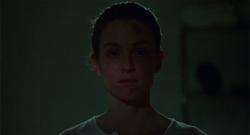
Safe
1995 -

Viy
1967 -
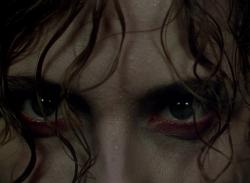
Black Narcissus
1947 -

Possession
1981 -

Carrie
1976 -

The Devils
1971 -
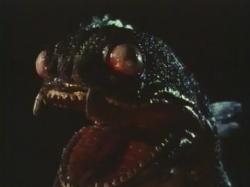
The Sea Serpent
1984 -

The Dark Half
1993 -

The Baby
1972 -
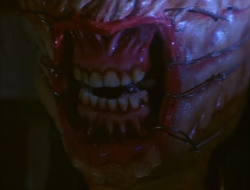
Hellraiser
1987 -

The White Reindeer
1952 -

The Serpent and the Rainbow
1988 -
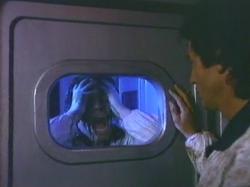
Endless Descent
1989 -

Prom Night
1980 -

Night Train Murders
1975 -
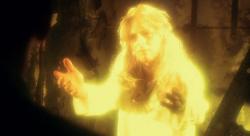
God Told Me To
1976 -
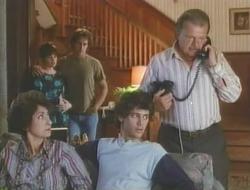
In a Child’s Name
1991 -

Beasts
1976 -

Prom Night II
1987 -

Men Behind the Sun
1986 -
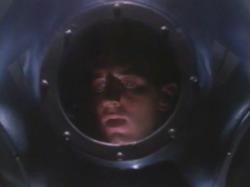
DeepStar Six
1989 -

At Midnight I’ll Take Your Soul
1964 -

They Came Back
2004 -
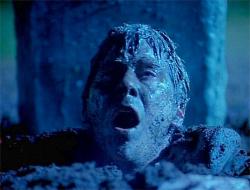
Buried Alive
1990 -
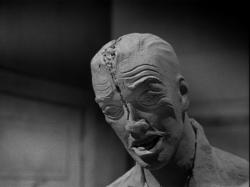
A Bucket of Blood
1959 -
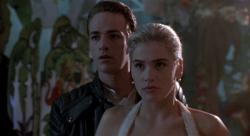
Buffy the Vampire Slayer
1992 -

Night and Fog
1956 -

It Came From Beneath the Sea
1955 -
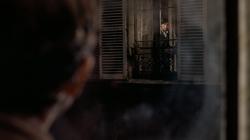
The Tenant
1976 -

Tokyo Gore Police
2008 -

The Rocky Horror Picture Show
1975
We don’t do comments anymore, but you may contact us here or find us on Twitter or Facebook.



